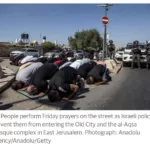**Tragedy Strikes International Journalists in South Lebanon as Israeli Shelling Claims One Life and Injures Six
In a heart-wrenching incident, a group of international journalists engaged in covering clashes on the southern border of Lebanon were struck by shelling, resulting in the loss of one life and injuries to six individuals. The Associated Press and Al Jazeera have attributed the shelling to an Israeli artillery shell.
Reuters, profoundly saddened by the incident, expressed their condolences, revealing that their esteemed videographer, Issam Abdallah, had tragically lost his life. Issam was an integral part of the Reuters team operating in southern Lebanon, providing live coverage. Our deepest sympathies go out to their grieving families during this trying period.
Al Jazeera reported that two of its own employees, Elie Brakhya and reporter Carmen Joukhadar, were among those wounded.
Visuals from the incident site depicted a charred vehicle, and this unfortunate event transpired during an exchange of fire at the Lebanon-Israel border, involving Israeli forces and members of Hezbollah, the militant Lebanese group.
The Lebanon-Israel border has witnessed sporadic outbreaks of violence since a recent attack by Hamas, the Palestinian militant group, on southern Israel.
In areas further away from the border, the landscape bore witness to an eerie quietude following three days of confrontations between Hezbollah fighters, their Palestinian allies, and Israeli forces. Roads, once bustling with life, now stood deserted. Town squares, once teeming with vibrant crowds, lay empty. Shops, usually open, had their shutters drawn, and fruit and vegetable stalls stood abandoned. In Maroun al-Ras, a village perched on a hill merely a mile from the border and known for intense fighting during a July 2006 war between Hezbollah and Israeli commandos, a veil of silence had descended, with all homes veiled by closed curtains and sealed doors.
It’s worth recalling that during the 2006 war, many towns and villages scattered across the hills of southern Lebanon bore the brunt of Israeli aerial bombardment and artillery shelling, leading to the destruction of houses and the upheaval of roads. The conflict claimed the lives of around 1,200 people in Lebanon, predominantly civilians, and nearly 200 Israeli lives, mainly soldiers. The impact extended to the southern suburbs of Beirut, where substantial destruction occurred.
Amid the current crisis, a hardware shop owner in the suburbs remained resolute. He emphasized his belief in the resistance, emphasizing that no adversity, be it the loss of property or family members, would waver their commitment. For them, it was a matter of spiritual conviction.
Since the onset of hostilities between Hamas and Israel, Hezbollah’s involvement has been measured and incremental. They have allowed Palestinian allies to launch rockets and stage infiltrations into Israeli territory. When Israeli forces responded by shelling a Hezbollah position, leading to the demise of three fighters, Hezbollah retaliated by targeting and destroying an armored vehicle, causing one soldier’s death and severe injury to another.
This tit-for-tat escalation adheres to established rules of engagement between the two sides, a continuation of their last war in 2006. The approach entails a limited, localized violent deterrence strategy, preserving a tentative calm along the broader border.
However, should Hezbollah and its regional associates determine a need for more active participation to alleviate pressure on Hamas in Gaza, the situation could evolve dramatically.
Along the road leading to the eastern edge of the southern border, a towering concrete border wall, fortified with metal mesh and surveillance cameras, displayed murals depicting people marching toward Jerusalem. Nearby, a group of UN peacekeepers in blue helmets engaged in conversations, taking respite amidst a deceptively fragile tranquility.






